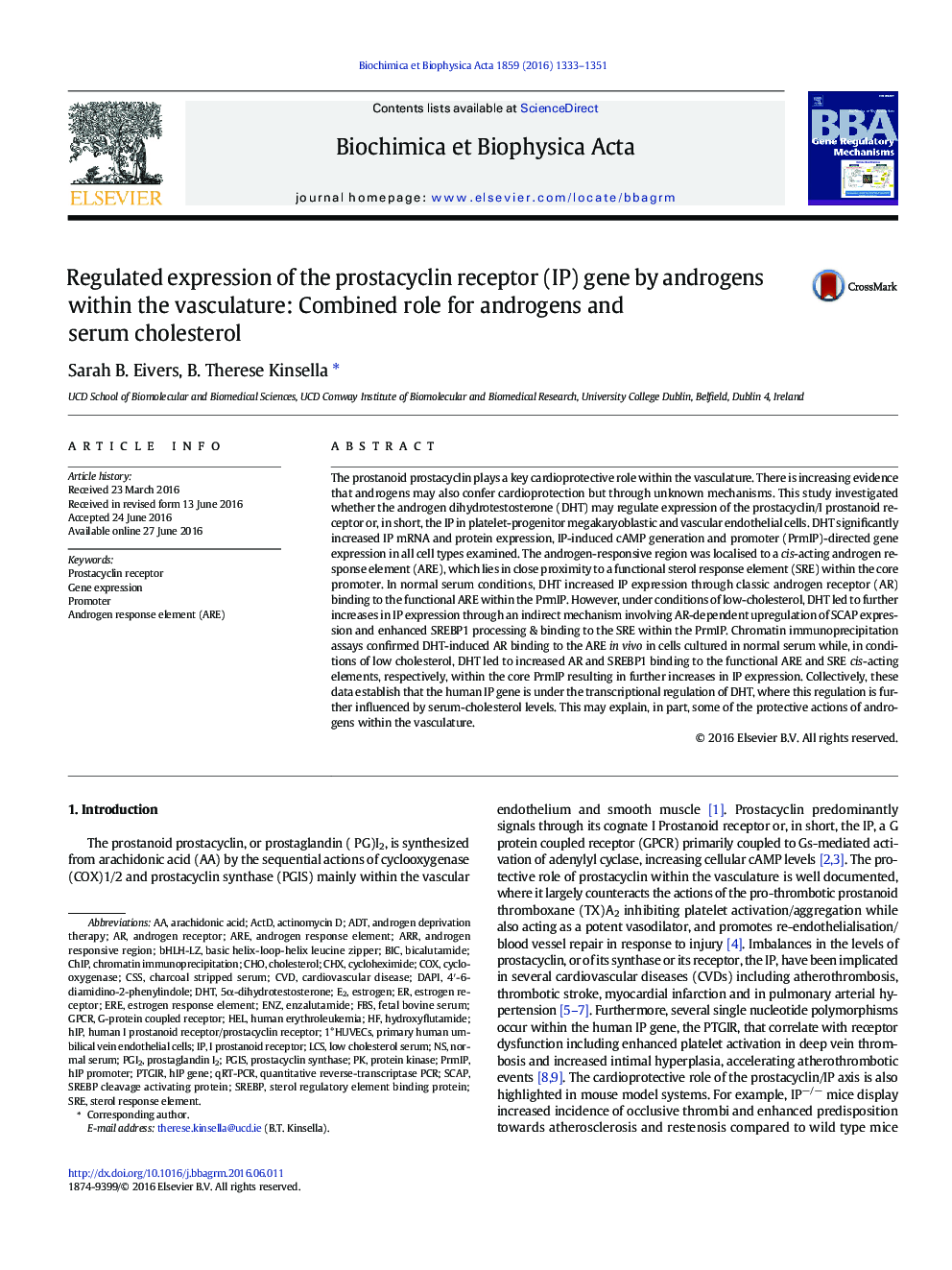| Article ID | Journal | Published Year | Pages | File Type |
|---|---|---|---|---|
| 1946289 | Biochimica et Biophysica Acta (BBA) - Gene Regulatory Mechanisms | 2016 | 19 Pages |
•Androgens upregulate the prostacyclin receptor within the vasculature.•Direct AR binding to a novel cis-element within the PTGIR promoter•Combined role for serum cholesterol established through an indirect AR mechanism.•Novel mechanisms of transcriptional regulation of the PTGIR established.•IP regulation proposed to mediate some of the protective effects of androgens.
The prostanoid prostacyclin plays a key cardioprotective role within the vasculature. There is increasing evidence that androgens may also confer cardioprotection but through unknown mechanisms. This study investigated whether the androgen dihydrotestosterone (DHT) may regulate expression of the prostacyclin/I prostanoid receptor or, in short, the IP in platelet-progenitor megakaryoblastic and vascular endothelial cells. DHT significantly increased IP mRNA and protein expression, IP-induced cAMP generation and promoter (PrmIP)-directed gene expression in all cell types examined. The androgen-responsive region was localised to a cis-acting androgen response element (ARE), which lies in close proximity to a functional sterol response element (SRE) within the core promoter. In normal serum conditions, DHT increased IP expression through classic androgen receptor (AR) binding to the functional ARE within the PrmIP. However, under conditions of low-cholesterol, DHT led to further increases in IP expression through an indirect mechanism involving AR-dependent upregulation of SCAP expression and enhanced SREBP1 processing & binding to the SRE within the PrmIP. Chromatin immunoprecipitation assays confirmed DHT-induced AR binding to the ARE in vivo in cells cultured in normal serum while, in conditions of low cholesterol, DHT led to increased AR and SREBP1 binding to the functional ARE and SRE cis-acting elements, respectively, within the core PrmIP resulting in further increases in IP expression. Collectively, these data establish that the human IP gene is under the transcriptional regulation of DHT, where this regulation is further influenced by serum-cholesterol levels. This may explain, in part, some of the protective actions of androgens within the vasculature.
Graphical abstractFigure optionsDownload full-size imageDownload high-quality image (230 K)Download as PowerPoint slide
